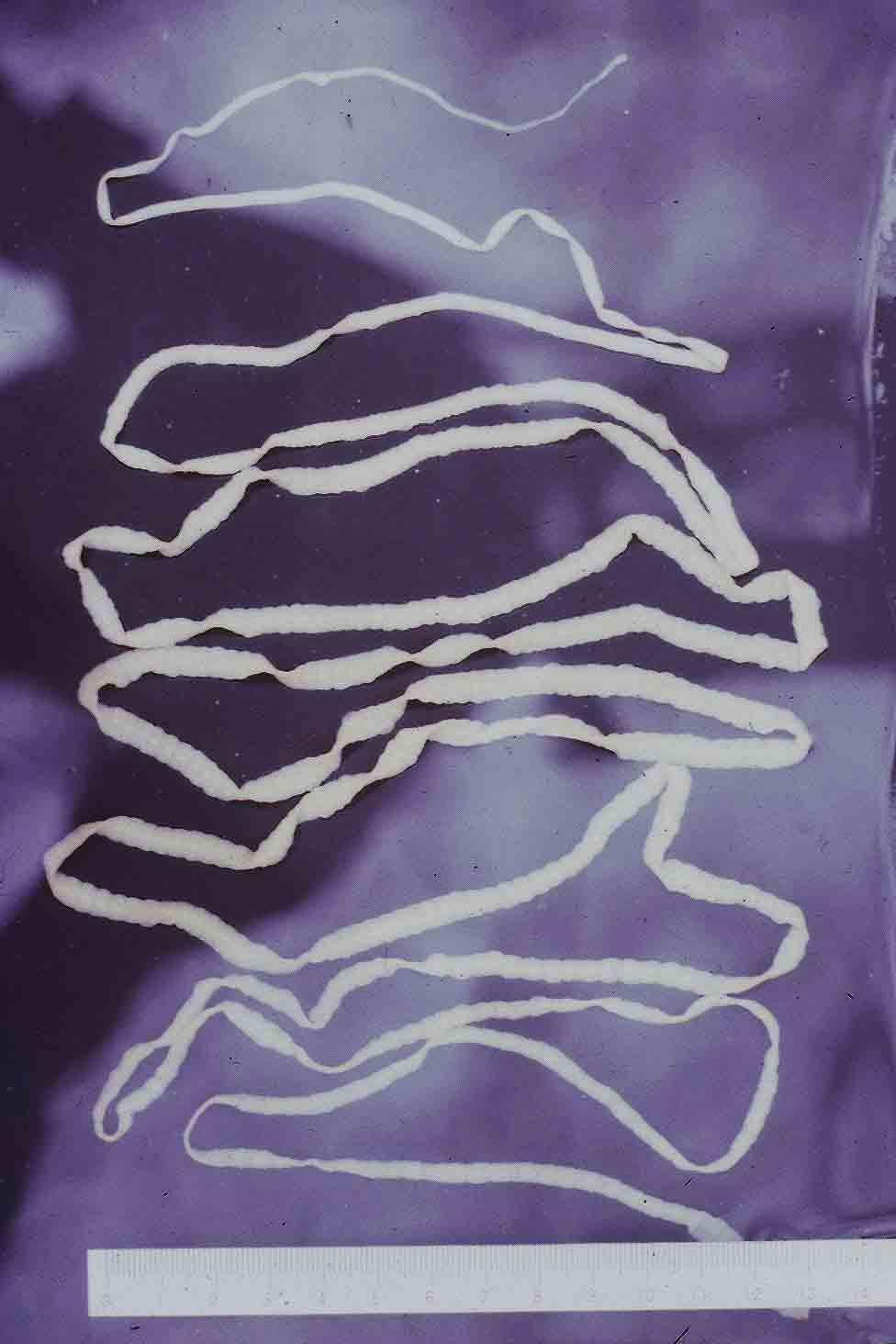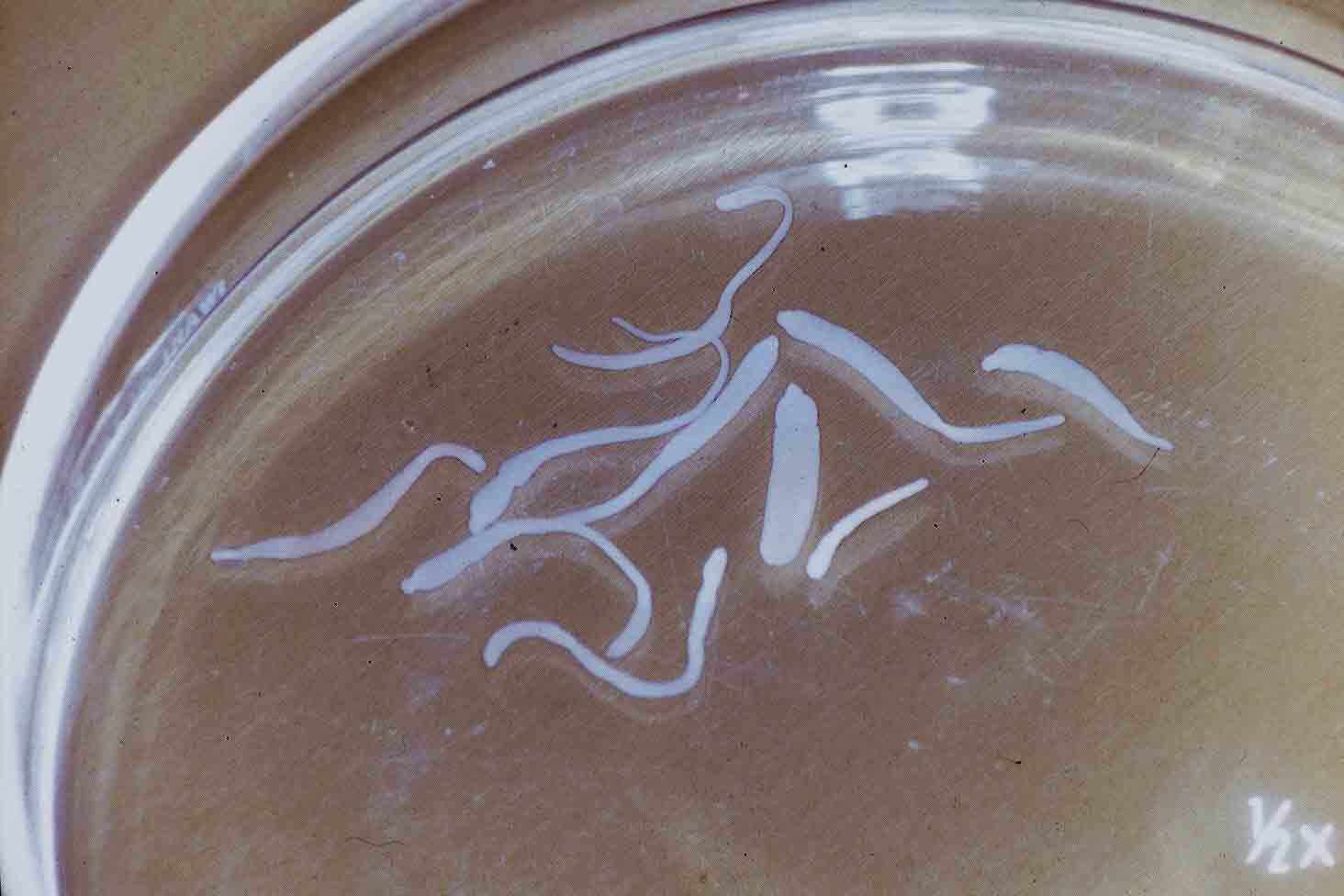

| Parasite | Diphyllobothrium nihonkaiense (Tapeworm) |
|---|---|
| Taxonomy | Plathyhelminthes, Cestoda, Pseudophyllidea |
| Hosts | Masu salmon (Oncorhynchus masou masou), chum salmon (O. keta), sockeye salmon (O. nerka), pink salmon (O. gorbuscha) |
| Infection site | Trunk muscle |
| Clinical signs | No external signs are evident. A white worm (1-2 cm) is observed in the trunk muscle (Fig. 1). |
| Parasitology | A white larva (plerocercoid) is ca. 1-2 cm in length (Fig. 2). Parasite infects to fish (the second intermediate host) preceded by infection to freshwater copepods (the first intermediate host) and followed by infection to terrestrial or marine mammals (the definitive host). However, the study of Awakura et al. (1985) indicates that the parasite invasion to masu salmon occurs in the sea (not in the river). This is incongruous with the well-recognized hypothesis that the freshwater copepods are the first intermediate host in nature. Although this parasite was previously identified as Diphyllobothrium latum distributing in Europe, morphological observations and gene analyses revealed that it was a different species, which was reassigned as D. nihonkaiense (Yamane et al., 1986, Nakao et al., 2007). |
| Pathology | It is considered that the parasite is not pathogenic to fish. |
| Health hazard | This parasite infects to human and causes diphyllobothriosis. Therefore, be careful when consume the host fishes raw. Heating or freezing to -18 C for 48 h is an effective method of killing the parasite. In general, the pathogenicity to human is low though the parasite reaches 10 m in length in the small intestine (Fig. 3). Diseased patients exhibit diarrhea and stomachache. However, D. latum infection sometimes causes B12 deficiency anaemia (Nyberg et al., 1961). Praziquantel is an effective anthelminthic. |
| Diagnosis | The worm can be found by candling slices (cut at several mm) of the fillets. It is difficult to distinguish Diphyllobothrium nihonkaiense from D. latum morphologically. It is expected that molecular diagnostic methods using such as mitochondrial sequences would be developed (Nakao et al., 2007). |
| Other information | This parasite is called as ‘tapeworm’, which collectively means Taeniidae and Diphyllobothriidae cestodes. Fujita (1994, 1999) beleives that tapeworm may reduce allergy diseases such as atopy or pollenosis. Anecdotally, a famous opera singer Maria Callas was parasitized by tapeworm by herself as diet aid. That may or may not be true. If that is true, the parasite she ingested would be Diphyllobothrium latum. Nevertheless, do not attempt. |
| References | Awakura, T., S.
Sakaguchi and T. Hara (1985): Studies on parasites of masu salmon Oncorhynchus masou ? VIII. Observations on the seasonal occurrence of Diphyllobothrium
latum plerocercoid. Sci. Rep.
Hokkaido Fish Hatchery, 40,
57-67. Fujita, K. (1994): Warau kaichu Kiseichu hakase funtoki. Kodansha, pp. 206 (In Japanese). Fujita, K. (1999): Kiseichugaku wa omoshiroi. Yodosha, pp. 105 (In Japanese). Nakao, M., D. Abmed, H. Yamasaki and A. Ito (2007):Mitochondrial genomes of human broad tapeworms Diphyllobothrium latum and Diphyllobothrium nihonkaiense (Cestoda: Diphyllobothriidae). Parasitol. Res., 101, 233-236. Nyberg, W., R. Grasbeck, M. Saarni and B. Von Bonsdorff (1961): Serum vitamin B12 levels and incidence of tapeworm anemia in a population heavily infected with Diphyllobothrium latum. Am. J. Clin. Nutr., 9, 606-612. Yamane, Y., H. Kamo, G. Bylund and B. J. Wikgren (1986) Diphyllobothrium nihonkaiense sp. nov. (Cestoda: Diphyllobothriidae)- revised identification of Japanese broad tapeworms. Shimane J. Med. Sci., 10, 29-48. |
Fig. 1. A plerocercoid larva of D. nihonkaiense in masu salmon..
Fig. 3. Adult worm of D. nihonkaiense.
(Photos by S. Urawa (1) and T. Awakura (2, 3))
Fig. 2. Plerocercoid larvae of D. nihonkaiense

